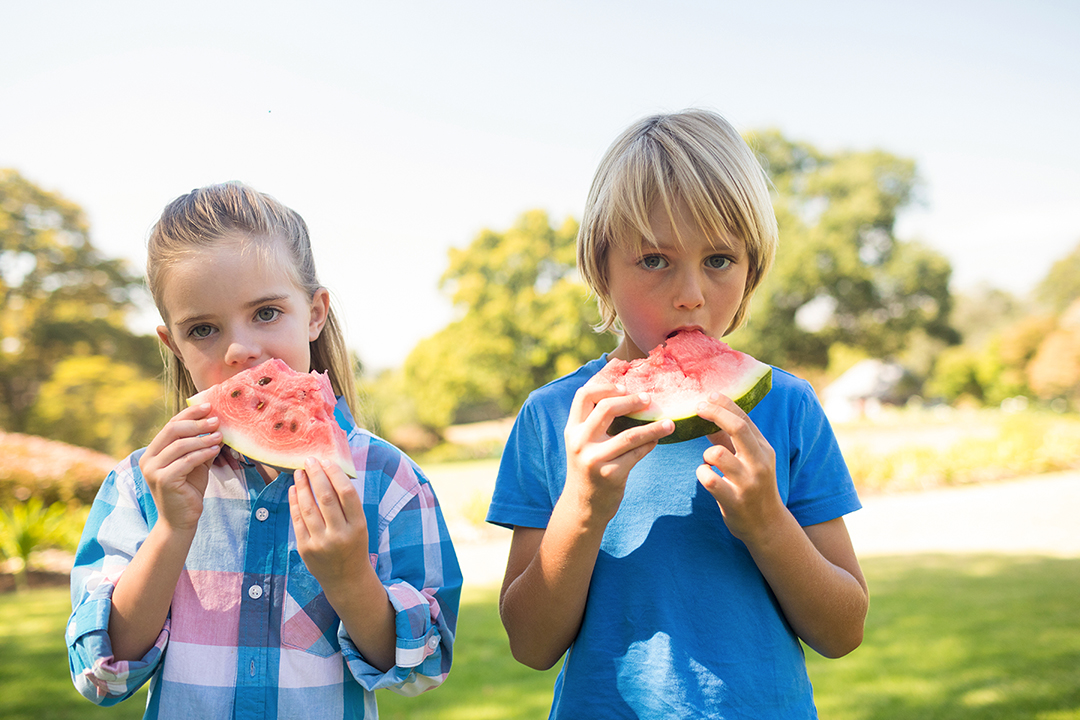
Like hurrying to grab your keys before leaving the house, some homemakers will be quick to buy and serve some watermelon before summer ends. Others may just relax and enjoy the melon as juice or in some form other than its fresh state, good in any season.
Not one of California’s top agricultural crops, watermelon claims California as its fourth largest producer, with Georgia, Alabama and Tennessee leading the way. California’s production of an estimated tons of watermelon is produced from fields in Sacramento County in the north, through the Central Valley Counties and in Riverside and Imperial Counties in the extreme south.
Enough varieties and formats are grown commercially to please dozens of lifestyles. Consider the tiny, round three-to-four pounder especially suited for the live-alone millenial or the single senior who might not be motivated for a second helping for several days.
And seeds? Forget the seeds, as the industry has, for nearly 20 years the vast majority of production has been in seedless varieties. Nursery production of plants gives growers a head start for transplanting in early spring and harvest as summer temperatures and melon appetites peak.
Although statistics for watermelon production in California are elusive, two of the melon’s major producers are recognized in Western Fresno County at Firebaugh. The area is central to the county’s well-established superiority of cantaloupe production as well, as a forerunner to the watermelons or overlapping them.
Harvesting continues to be a traditional exercise, one that appeals to college football players employed for the short season. Each melon is cut from its supporting vine as it rests on the ground. Transfer of the heavy fruit (purists will declare it’s a vegetable) is a smooth upward toss from a ground-level passer to a receiver riding a low trailer. The two switch positions every so often.
A day of harvesting in 100-degree temperatures makes football practice seem like a trip to Disneyland. The saving feature is that the work day begins at daybreak or earlier and often ends in time for lunch. In some cases a well-lighted harvest takes place at night.
The taste and sweet appeal of watermelon – a kind of built-in from childhood for many – has been captured and distributed by most of the juice drink companies. At least one of them follows kosher rules and processing restrictions to produce a canned drink stocked in coin-operated vending machines.
Watermelon enjoyment includes several traditions. Serving configurations can range from a wheel-shaped slab to the traditional quarter round chunk and several shapes in between.
And don’t deny the family’s traditional canning experts the opportunity to produce and can a supply of watermelon rind pickles, just the ticket for a summer holiday meal, or he or she might want to explain his or her canning technique as the pickle slabs are enjoyed over Thanksgiving or Christmas dinner.
What oldtimer can forget the technique of thumping a melon on display in the produce section to determine if it was ripe, sweet and ready to purchase? Produce managers used to stand by with a “plugger,” a sharp instrument that could penetrate a melon’s rind and bring forth an edible sample from deep within, offered to a melon shopper free of charge.
Discovered in Egypt some 5,000 years ago (or Africa, depending on your source), the watermelon has undergone hundreds of changes and improvements. In the process it has inundated Middle Eastern as well as American, European and Oriental markets. For the summer months it is a staple, offering sweet and juicy taste sensations in dozens of different packages.
Watermelon stands ready to sparkle as the basic key to summer dessert enjoyment. It’s a key that homemakers won’t want to overlook as they rush into fall.








